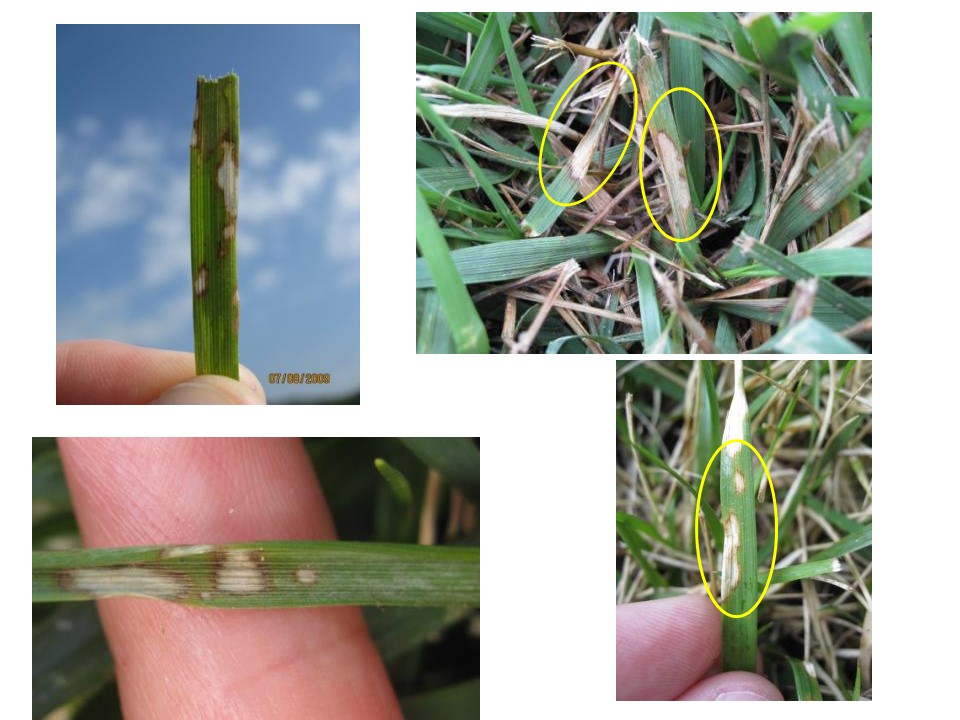(Megan Kennelly, KSU Plant Pathology)
Whew, it’s hot out there. We are coming up on August which is usually the peak stress time for our cool-season turfgrasses. Tall fescue lawns can start tanking this time of year, and I get a lot of samples, emails, and phone calls about brown patch.
Is this brown patch in tall fescue? What do you think? How would you figure it out?

So – how can you tell if it is brown patch or something else? In tall fescue, brown patch makes pretty characteristic lesions. Look for this in the areas showing decline. You might have an easier time looking on the edge of the patches instead of in the middle. Look for tan spots with a dark halo. Here are a bunch of examples: (you can click to zoom in a little bit.)

In that first stand of turf above, it was NOT brown patch.
When thinking about environmental stress there are a lot of things to consider – water (too much, too little), drainage, fertilizer, thatch, mowing practices…Take a look at this stand of turf right here:

Compaction or fill issues: This site (above) had a lot of construction activity a year or 2 ago. Construction can mean compaction from heavy equipment, backfill with less-than-optimal (to put it diplomatically) soil, and other problems. Those factors reduce root health, and then areas with reduced root function are the first to crash out when summer stress arrives.
Poor root health – I have a low area in my yard (with heavy clay soils) where water pools during heavy rains. We haven’t had heavy rains for quite awhile, but the root systems there probably didn’t grow as well. Now, those spots are showing decline while surrounding areas are looking much better.
Thatch – As one final possibility, don’t forget about thatch. Now, tall tescue is a bunch grass (lacking laterally-spreading rhizomes and stolons) but it can still build up thatch. Plus, sometimes tall fescue is planted in a blend with Kenctucky bluegrass which is more prone to thatch.

I talked about thatch not too long ago on the Facebook page. Here is some information about thatch (click the link to view).
Thatch-info
So, don’t assume you’ve got brown patch. There are plenty of other problems (even more than I listed here) that affect the health of tall fescue in summertime.







